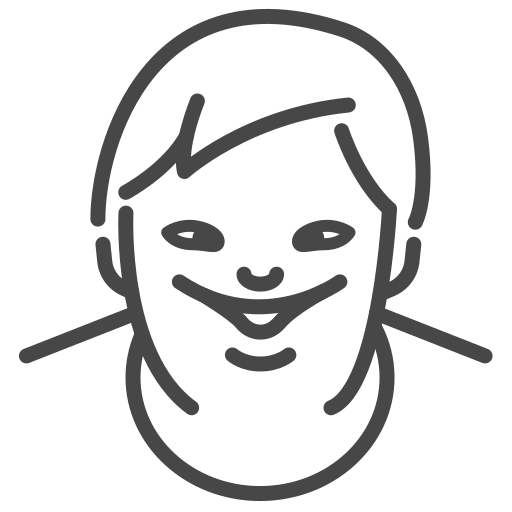Children’s Diseases

Recurrent cough and cold

Low immunity

Nutritional Deficiencies

Asthma

Obesity

Bedwetting

Autism

Poor concentration/memory

Learning disorders
- Recurrent Cough & Cold
- Low Immunity
- Nutritional Deficiencies
- Asthma
- Obesity
- Bed wetting
- Autism
- Poor Memory
- Learning Disorders

Recurrent Cough and Cold
Coughs caused by colds due to viruses can last weeks, especially if a child has one cold right after another. Asthma, allergies, or a chronic infection in the sinuses or airways also might cause lasting coughs.
Types of Recurrent Cough:
- Wet cough
- Dry cough
- Allergic cough
- Croup
- Whooping cough
Signs and Symptoms:
- Blocked or runny nose
- Sore throat
- Coughing
- Sneezing
- Tiredness

Low Immunity
Signs and Symptoms:
Frequent Infections:
Recurrent and frequent respiratory infections such as cold and flu.
Delayed Healing:
Mild wounds take too long to heal when the immune system is weak.
Failure to Gain Weight:
Poor growth and underweight status can be red signals pointing to poor immunity.

Nutritional Deficiencies
A weak immune system leads to poor nutritional status in children. Visible signs of nutritional deficiencies like skin and hair changes, brittle nails, bruising easily, and low attention span are tell-tale signs of a weak immune system.

Asthma
In childhood asthma, the lungs and airways become easily inflamed when exposed to certain triggers. Such triggers include inhaling pollen or catching a cold or other respiratory infection. Childhood asthma can cause irritating daily symptoms that interfere with play, sports, school, and sleep. In some children, unmanaged asthma can cause dangerous asthma attacks.
Types of Asthma:
- Allergic asthma
- Non-allergic asthma
- 'Seasonal' asthma
- Difficult asthma
- Severe asthma
- Eosinophilic asthma
Signs and Symptoms:
- Shortness of breath
- Cough
- Wheezing (a whistling sound)
- Chest pain
- Fatigue
- Problems eating
- Blue lips or fingernails
- Chest pulling in with each breath
- Less energy during play
- Trouble speaking because of restricted breathing
- Tight neck and chest muscles

Obesity
Childhood obesity is a serious medical condition that affects children and adolescents. It's particularly troubling because the extra pounds often start children on the path to health problems. Childhood obesity can also lead to poor self-esteem and depression.
Signs and Symptoms:
- Poor physical endurance or ability to keep up with friends
- Shortness of breath with exertion
- Snoring or long pauses in breathing while sleeping
- Consistent complaints of pain in their knees, ankles, or hips
- Swelling or fluid accumulation in their lower legs or feet

Bedwetting
Bed-wetting — also called nighttime incontinence or nocturnal enuresis — means passing urine without intending to while asleep. This happens after the age at which staying dry at night can be reasonably expected.
If your child continues to wet the bed, treat the problem with patience and understanding. Lifestyle changes, bladder training, moisture alarms, and Homeopathic constitutional medicines has a solution to cure bed-wetting.
Signs and Symptoms:
- Waking up with wet pajamas or sheets from pee is the main symptom of bedwetting.
- You likely won't know that you wet the bed until it's too late.
- While it's a physical condition, bedwetting can take an extreme emotional toll on anyone who experiences it. You may feel embarrassed or ashamed.

Autism
Autism, also known as Autism Spectrum Disorder (ASD), is a complex neurodevelopmental disorder that affects how a person communicates, interacts with others, and processes information. It is called a “spectrum” disorder because its symptoms and characteristics can vary widely from one individual to another. Autism typically becomes apparent in early childhood and lasts throughout a person’s life.
Signs and Symptoms:
- Over responsivity: Bright lights, loud noises, certain textures of clothing, or strong smells can be overwhelming and cause distress or discomfort.
- Under responsivity: Unresponsive to touch, pain, or sounds, which can lead to difficulties recognizing environmental cues or engaging in social interactions.
- Sensory Seeking: Seek intense experiences, such as spinning, rocking, or touching objects excessively, to regulate sensory systems.
- Poor Sensory Discrimination: Individuals might have trouble distinguishing between different textures or identifying where a touch is coming from.
- Poor Motor Coordination: Challenges in activities such as writing, tying shoelaces, or using utensils.
- Emotional and Behavioral Challenges: Easily overwhelmed, irritable, anxious, or have meltdowns when confronted with sensory triggers.
- Difficulty with Transitions: Changes in routine or new environments can be particularly challenging for individuals with SPD, as they struggle to adapt to unfamiliar sensory experiences.

Poor Concentration/Memory
Some children may have trouble sustaining their attention to a given task. This may be due to underlying anxiety, frustration and/or sensory sensitivities. It’s helpful to monitor their behavior to help you to identify potential causes and solutions.
Signs and symptoms:
- Missing important details about homework or classwork or timetable.
- Starting tasks before they have understood what's required or listened to all the instructions.
- Being unable to organize themselves and their school assignments properly.
- Difficulty revising for, and sitting, exams.

Learning Disorders
A learning disorder is present when the brain takes in and works with information in a way that is not typical. It keeps a person from learning a skill and using it well. People with learning disorders by and large have average or above-average intelligence. So, there's a gap between their expected skills, based on age and intelligence, and how they do in school.
Signs and symptoms:
At times, all children have trouble learning and using academic skills. But when the symptoms last for at least six months and don't get better with help from adults, a child might have a learning disorder.
- Not being able to master skills in reading, spelling, writing, or math at or near the expected age and grade levels.
- Trouble understanding and following instructions.
- Problems remembering what someone just said.
- Lacking coordination while walking, playing sports, or doing things that use small muscles, such as holding a pencil.
- Easily losing homework, schoolbooks, or other items.
- Trouble completing homework and assignments on time.
- Acting out or having defiant, angry, or large emotional reactions at school. Or, acting any of these ways while doing academic tasks such as homework or reading.
